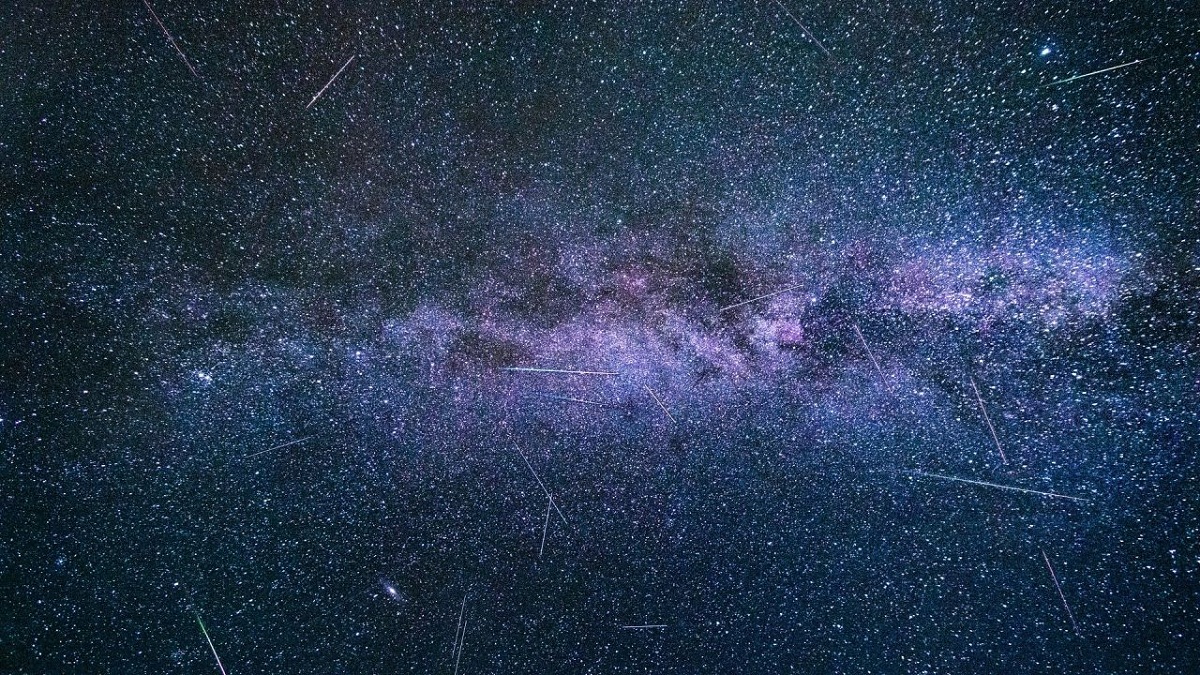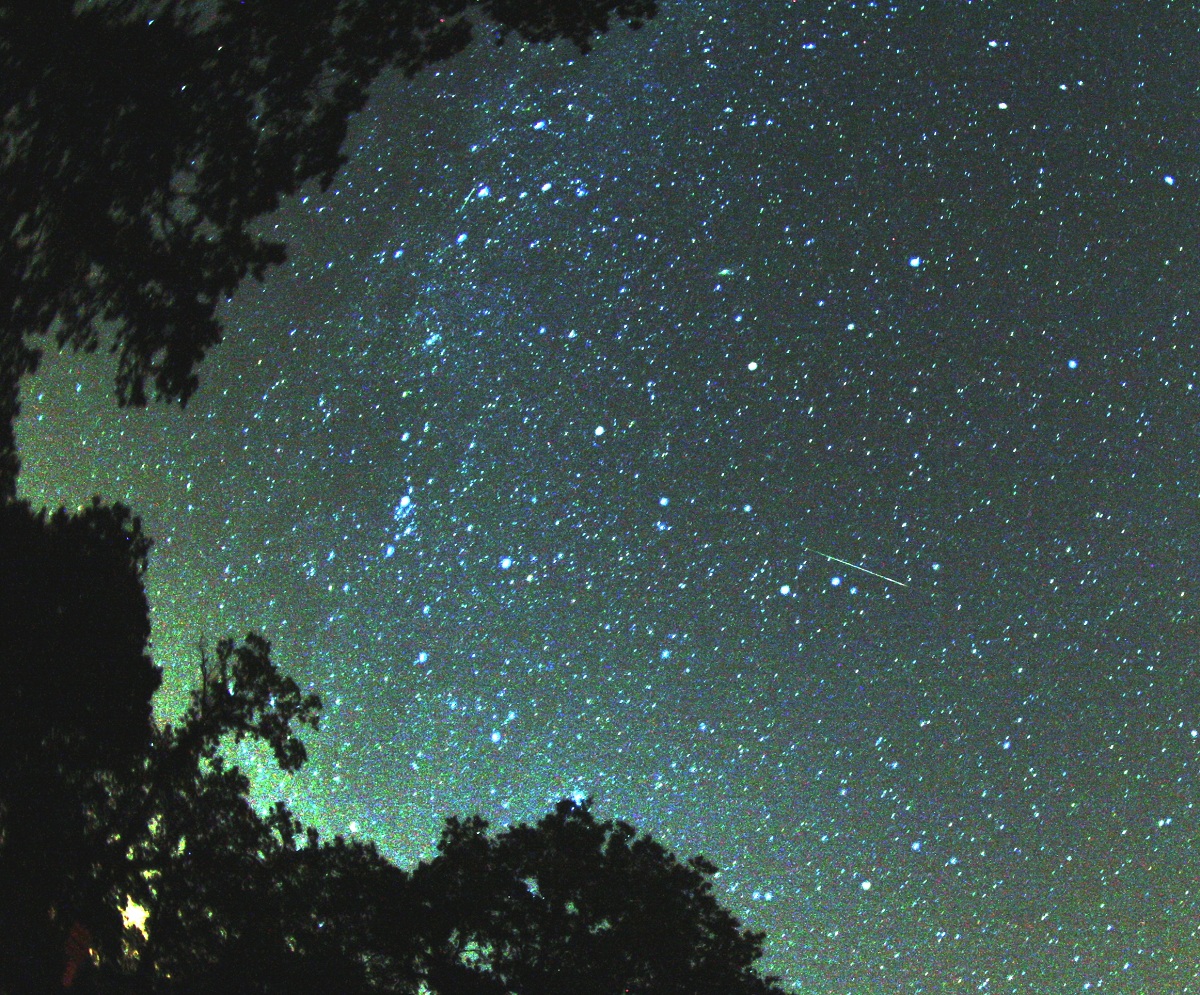
Surely you have ever heard about the meteor shower known as chased or tears of San Lorenzo. It is a meteor shower that appears in the constellation of Perseus, hence its name, and that has its maximum relevance between August 9 and 13. During these days you can see a multitude of luminous lines in the night sky, which corresponds to the so-called meteor showers. It is one of the best known meteor showers in the world and has its greatest intensity since they can produce up to 80 meteors per hour or more. It must be taken into account that the geographical location of the atmospheric conditions of the moment are necessary aspects to enjoy them to the fullest.
Therefore, we are going to dedicate this article to tell you all the characteristics, origin and how to see the Perseids.
Key features

It is known that throughout the year there are various meteor showers at various points in the sky. However, the Perseids are those that have had a greater relevance since it has a high rate of meteors per hour. In addition, they occur during summer nights in the Northern Hemisphere, making it much more enjoyable. Meteor showers that happen during winter are more complicated must. First, because of the night cold that does not allow you to be comfortable while watching the meteor shower. On the other hand, we have adverse weather conditions. During the winter it is more likely that there will be rain, fog or more cloudiness that will not allow you to see El Hierro well.
The Perseids were known to the Chinese around AD 36 At some point in the Middle Ages, Catholics baptized these rains with the name of tears of Saint Lawrence. Naturally there were some debates about the origin of these stars since they were sporadic. The strong general consensus on this was simply atmospheric phenomena. However, already at the beginning of XIX century some astronomers correctly identified them as a celestial phenomenon.
Meteor showers are usually named after the constellation from which they appear to come. This can sometimes cause error is due to an effect on perspective. Some of the meteor showers are usually parallel to the trajectories of the meteors. This makes it appear to the observer on the ground that they converge at a point called radiant.
Origin of the Perseids

We have already mentioned that the origin was quite difficult to know. However, during the early years of the nineteenth century, some scientists such as Alexander von Humboldt and Adolphe Quetelet thought that meteor showers were atmospheric phenomena. The Leonids are meteor showers that occur regularly in November, particularly intense compared to other meteor showers. As a result of here there was a real discussion about the nature of shooting stars.
After various studies, American astronomers Denison Olmsted, Edward Herrick, and John Locke independently concluded that meteor showers were caused by the fragments of matter that the earth encountered travel its annual orbit around the sun. Some years later, other astronomers were the ones who discovered the link between the orbits of comets and meteor showers. In this way, it was possible to verify that the orbit of the comment Tempel-Tuttle coincided exactly with the appearance of the Leonids. This is how the origin of the meteor showers could be known. It was known that these meteor showers were nothing more than the encounter of our planet with some remains left by comets whose orbits brought them close to the sun.
Comets and Meteor Showers

The idea of a star known as perseids has its origin in comets and also asteroids. Asteroids are objects that also belong to the solar system just like planets do. These are fragments that are attracted by the gravity exerted by the sun and the remains were scattered in the form of dust around the orbit. Dust is made up of different particles that have different sizes. There are some fragments that have a very small size below the micron, although there are also those that have an appreciable size.
When colliding with the Earth's atmosphere at high speed, an ionization of the molecules of the atmosphere takes place. It is here that a trail of light is produced that is known as a shooting star. If we analyze the case of the Perseids, we see that they reach the speed of 61 kilometers per second when they meet our planet. Keep in mind that, for a shooting star to be more visible, it must have a higher speed. In such a way, that the higher the speed, the greater the luminosity of a meteor.
The comet that gave rise to the Perseids is 109P / Swift-Tuttle, discovered in 1862 and with an approximate diameter of 26 km. The time it takes for the comet to travel its elliptical orbit around the sun is known to be about 133 years. It was last seen in 1992 and scientific calculations say that it will pass close to our planet around the year 4479. The reason for concern about this proximity is that its diameter is more than double that of the asteroid that is thought to have caused the extinction. of the dinosaurs.
How to see the Perseids
We know that this meteor shower begins its activity in mid-July and ends in mid-August of each year. The maximum of activity coincides with the feast of San Lorenzo around the 10th of August. The radiant is the area where the shooting star can most often be seen. In this case, the point on the celestial sphere where the shooting star originates is in the boreal constellation Perseus.
In order to observe this meteor shower, no instrument is needed. The best observations can be made with the naked eye, although you need to choose a location that meets certain conditions. The main thing is be away from any light pollution, trees and buildings that make it difficult to see the night sky.
You have to make sure that the moon is lower on the horizon, otherwise we can barely make out the shooting stars. The most appropriate time for this is after midnight.
I hope that with this information you can learn more about the Perseids, their characteristics and how to see them.